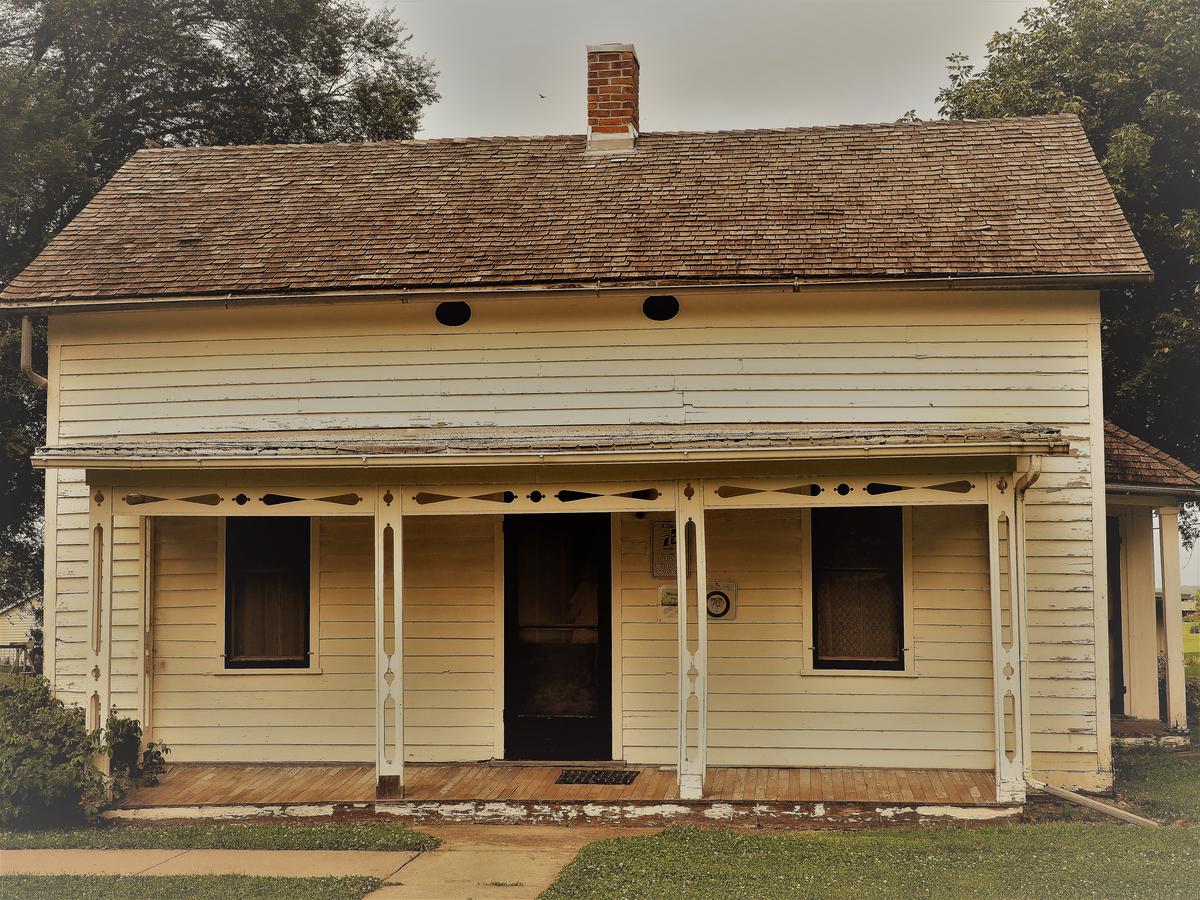
Religious visions were everywhere in the years preceding the Civil War. Boom towns out west here may have been hell holes for a time, but they were also peopled by starry-eyed believers who claimed their marching orders came from on high.
Tabor, Iowa, sits on a bluff far above the Missouri, the highest point of Fremont County. The place is not in terrific shape today; but Tabor has an epic past, created when fiery abolitionist Congregationalists set up camp here, just across the river from Nebraska.
The Reverend John Todd House, in town, was a stop on the Underground Railroad in the 1850s, often a port of entry to runaway slaves who weren’t free until they could be protected from slave-holders and vigilante northerners looking to make a buck from substantial bounties. There was money to be made: slaves were property, after all.
In the 1850s, slavery was under attack, and Rev. Todd was a soldier in God’s army.
Truth is, he got into trouble before there even was a Tabor. A discussion about slavery aboard the steamer he came up on became heated. Once other passengers detected an abolitionist, they wanted his scalp. "Shoot him," someone yelled. "Kill him." One idiot told him if it was his choice, he’d straight-up trade the pastor for a mongrel dog and shoot the dog. Todd says he learned later that man was "a minister of the gospel from Missouri."
Both Iowa Congregationalists and Iowa Quakers thought the institution of slavery an abomination. What separated the two faith communities was a commitment to violence. The Quakers said no. Rev. John Todd and his Congregationalists said yes and became a prototype for an abolitionist preacher in Marilynne Robinson’s Gilead.
The manse of the Reverend John Todd sits right on the square in Tabor--don’t expect a palace. But the old house still has an tiny door leading down to a dank basement. John Todd was no more than a shim over five and a half feet tall, so what’s downstairs is more his size, a cave really, not inviting.
But if you stop by, don’t not go downstairs. At one point in time that basement was an armory full of guns for the war he thought about to begin in "Bleeding Kansas."
What's there today? Nothing. No cement floor, just dirt, a humming dehumidifier, random stones, bricks. That cellar was was never meant to be lived in. It was a place to hide when the prairie sky turned foreboding.
At the request of none other than fiery John Brown, who stayed right there in Tabor, Pastor Todd stocked his house full of guns because he simply could not abide the sin of slavery. Slaves, he and his friend John Brown claimed, had a more righteous reason for rebellion than did patriot colonists a century before.
In his own memoir of that era, Todd described himself and what happened this way:
The parson had one brass canon on his haymow, and another on wheels in his wagon shed. He had also boxes of clothing, boxes of ammunition, boxes of muskets, boxes of sabres, and twenty boxes of Sharps rifles stowed away in the cellar all winter.
The preacher took up arms. His eyes had seen the glory.
You'll have to get off the beaten track to find Tabor, and you’ll have to call ahead to to get in the house. Not many Americans stop there anymore, if they ever did.
But the basement still beckons, and the memory of that time and place and the war it begat somehow seems more real when you stand beneath ancient beams on a dirt floor, where once a preacher readied himself for a war that God meant to happen, a war to free the slaves.
No comments:
Post a Comment